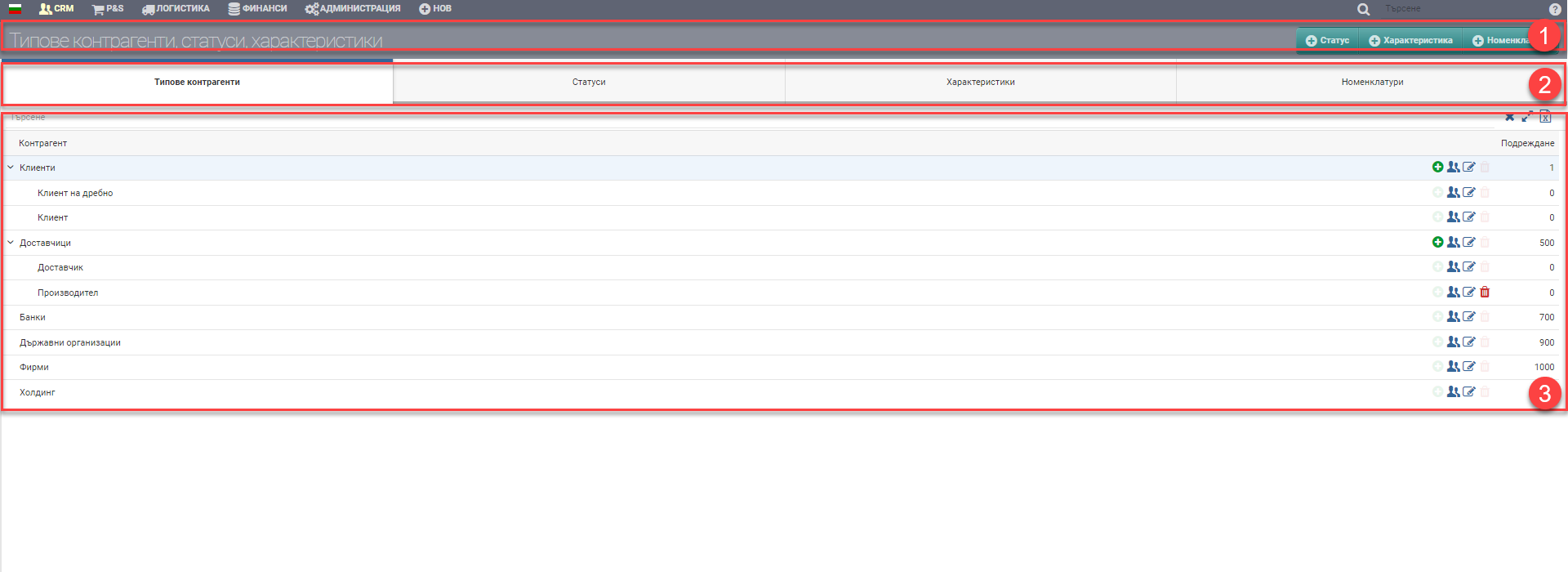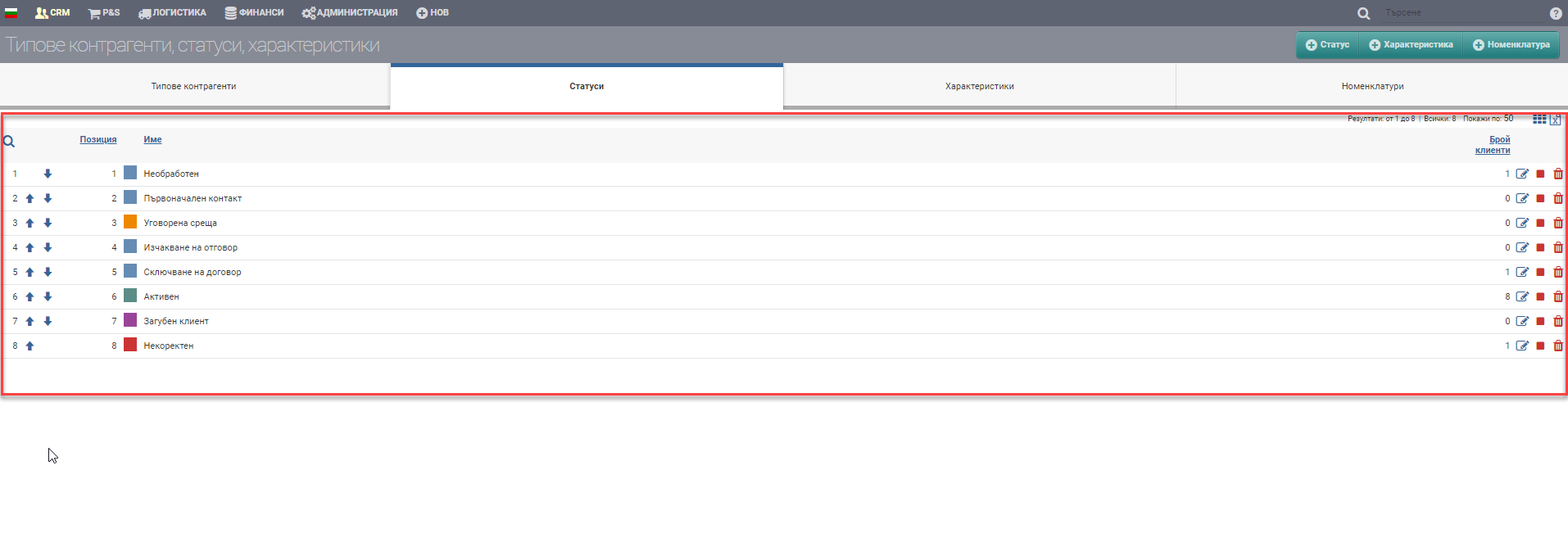CRM module of Prim.IO allows to define separate types of contractors. This will allow you to better segment individual customers/suppliers and create specific pricing policies and promotions. Reports and analyses by customer type will give you important information about revenue sources and help you set the right priorities.
On this page, you can add and configure new counterparty types, statuses, characteristics, and nomenclatures. On the screen you see Header (1), Tabs (2) and List (3).

In the Header you see the Status, Feature, Nomenclature buttons. With them you add a new status, characteristic or nomenclature. Depending on the selected Tab (2), different Lists (3) are displayed.
Types of counterparties
The types of counterparties serve to differentiate customers by different characteristics depending on the needs of the company. For example, by different type of distribution, association of price lists to individual groups, etc.
Different types of counterparties have different functionality:
- Customer – A counterparty, a user of a good or service provided by the company. You can add different customer types;
- Supplier – A contractor providing a good or service that a company uses. You can add different types of providers;
- Bank – A counterparty to which bank accounts and subroutines for importing and processing bank statements are associated;
- Company – The legal entity/persons using the system;
- Government Organization – An administrative entity to which you can issue tax documents;
- Holding – Customer Group, allows you to make reports by customer groups;

| Column | Description |
| ID | Counterparty ID |
| Code | Counterparty code |
| Arrange | Arrangement of counterparty type relative to others |
You can perform the following actions on the list:
- Add – add counterparty type (Customer/Supplier)
- Rights settings – set the rights of the counterparty type;
- Edit – edit counterparty type;
- Delete – delete counterparty type.
Status
For a complete work with CRM module we also provide the possibility to create different statuses for your contractors. This can categorize them in a useful way, for example – for customer activity- contracted, active, inactive, incorrect, etc. The categorization is free to change and add specifics.
Statuses are a reference nomenclature that you use to indicate the status of counterparties in order to track them against selected criteria.

| Column | Description |
| Position | Position of status |
| Code | Status code |
| Name | Name of status |
| Number of customers | Number of customers with the given status |
You can perform the following actions on the list:
- Arrows – change the position of a status;
- Edit – edit status;
- Stop/Start – stop/start status;
- Delete – delete status;
Features
The characteristics refer to the client and its particularities. They serve to illustrate the additional information you would like to receive about different customers.

| Column | Description |
| Code | Code of characteristic |
| Name | Name of characteristic |
| Type | Text, Number, Nomenclature, etc. |
| Definition | Additional information about characteristic |
You can perform the following actions on the list:
- Arrows – change the position of a feature with the arrows at the top of the list;
- Edit – edit a characteristic;
- Delete – delete a characteristic.
Nomenclatures
The structuring of the nomenclatures defines the capabilities of the reports, the analytical sections and the overall information service.

You can perform the following actions on the list:
- Add – add an item to a nomenclature;
- Edit – edit nomenclature;
- Delete – delete nomenclature.